Red is the color of passion and love. It’s always appealing to the eyes and stands out among other colors. That’s why seeing a bird with red breast color is always fascinating. Birds in general are extraordinarily beautiful works of nature that provide a burst of vivid color to an otherwise dark existence. Some of them are very captivating because of their stunning color.
From the vivid blues to the oranges, greens, reds, and yellow birds, they are all magnificent. Even more endearing to see are birds with a red breast. These birds are a treat to watch, flashing their magnificent self as they sit on adjacent fences or among the thick tree foliage, or even effortlessly fly in the sky.
The birds seem magnificent because of the red color. Therefore, red-chested birds can never go undetected. So, if you are among those who adore birds with red breasts and want to know more about them, you are in the right place
List of birds with red breast:
In this blog post, we’ve compiled a collection of birds with stunningly red chests. Some birds have brilliant red wings, while others have astonishingly outstanding red faces.
But before you go on your birding expedition, be certain that you have the necessary tools to thoroughly examine the intriguing birds.
- Scarlet honeyeater
- Scarlet robin
- Painted bunting
- Apapane
- House finch
- Purple finch
- Cassin’s finch
- Vermilion flycatcher
- Painted whitestart
- Scarlet honeycreeper
- Summer tanager
- Scarlet tanager
- Red-breasted sapsucker
- Red crossbill
- Pyrrhuloxia
- Crimson collared grosbeak
- Rose-breasted grosbeak
- Pine grosbeak
- Northern cardinals
- Elegant trogon
- Hepatic tanager
- Eared trogon
1. Scarlet honeyeater

Image Source
- Scientific name: Myzomela sanguinolenta
- Life span: Up to 6 years
- Size: 10 cm (4 in)
- Weight: 5-10 g
- Origin: Australia, Indonesia, Papua New Guinea
The Scarlet Honeyeater is a tiny passerine bird that mostly consumes nectar. It is a member of the Honeyeater family.
Its wings and tail are coated in black feathers, giving the bird a very noticeable look. The bird has a brilliantly extravagant crimson-red coloring on the forehead, back, and down to the breast, with white underparts.
The scarlet bird is an Australian native that inhabits open woods, woodlands, wetlands, and even rainforests. It might be a joy to see the adorable little bird among blooming plants in populated locations like parks, roadside vegetation, and even your home.
2. Scarlet robin (small bird with red breast)

Image Source
- Scientific name: Petroica boodang
- Life span: Up to 5 years
- Size: 12-14 cm (4.7-5.5 in)
- Weight: 12-15 g
- Origin: Australia
The medium-sized robin has a big and sturdy body, a strikingly vivid crimson-red breast, and a completely black head, wings, and tail. The eyes are surrounded by a noticeable patch of white feathers. The females lack the stunning look of the males, having dull grey-brown plumage with lighter reddish breast.
They may sometimes be seen in backyards and live in a variety of settings, including open woodlands, meadows, farms, and even rainforests.
These birds often sit low in the vegetation to conceal themselves from predators and linger behind to catch their food from the ground.
3. Painted bunting
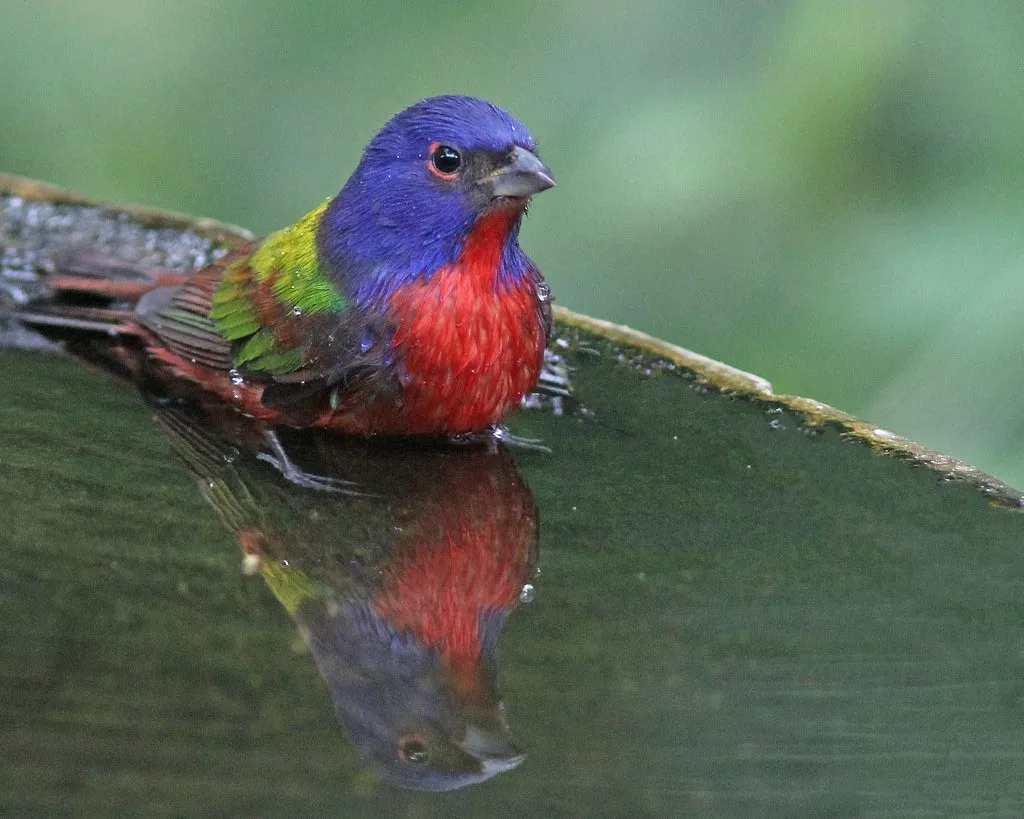
- Scientific name: Passerina ciris
- Life span: Up to 8 years
- Size: 11-13 cm (4.3-5.1 in)
- Weight: 12-17 g
- Origin: North America
With stunning blue, red, green, and yellow feathers, the Painted Bunting is one of the most colorful and spectacular kinds of birds, and it is a sight to see.
The Buntings, which are members of the Cardinal family, have a striking combination of colors, with vivid red feathers identifying the lower body. The females, on the other hand, are fully covered in green fur.
The brilliant songbirds often live in the woods and woodlands. They graze in swarms and sing lovely wandering melodies together. These birds are very social.
Pay attention to the metallic chip sounds if you’re attempting to locate these birds in the jungle.
4. Apapane

Image Source
- Scientific name: Himatione sanguinea
- Life span: Up to 6 years
- Size: 12 cm (4.7 in)
- Weight: 8-10 g
- Origin: Hawaii
The Apapane is a stunning ruby-red bird with a small, pointed black beak and white under-feather streaks in the tail. It is one of the most common species of Hawaiian honeycreepers. Compared to the I’iwi, these birds are much smaller.
These striking blood-red birds are present on all the bigger islands and in the larger woods, where they usually live in the upland forests and at higher altitudes beneath the forest canopy. These birds are social and often gather in flocks when flying through the air or gather at a blossoming tree.
The Apapane, who have a special affinity for ohi’a flowers, depend heavily on the nectar of these flowers which is an important part of their pollination.
5. House finch
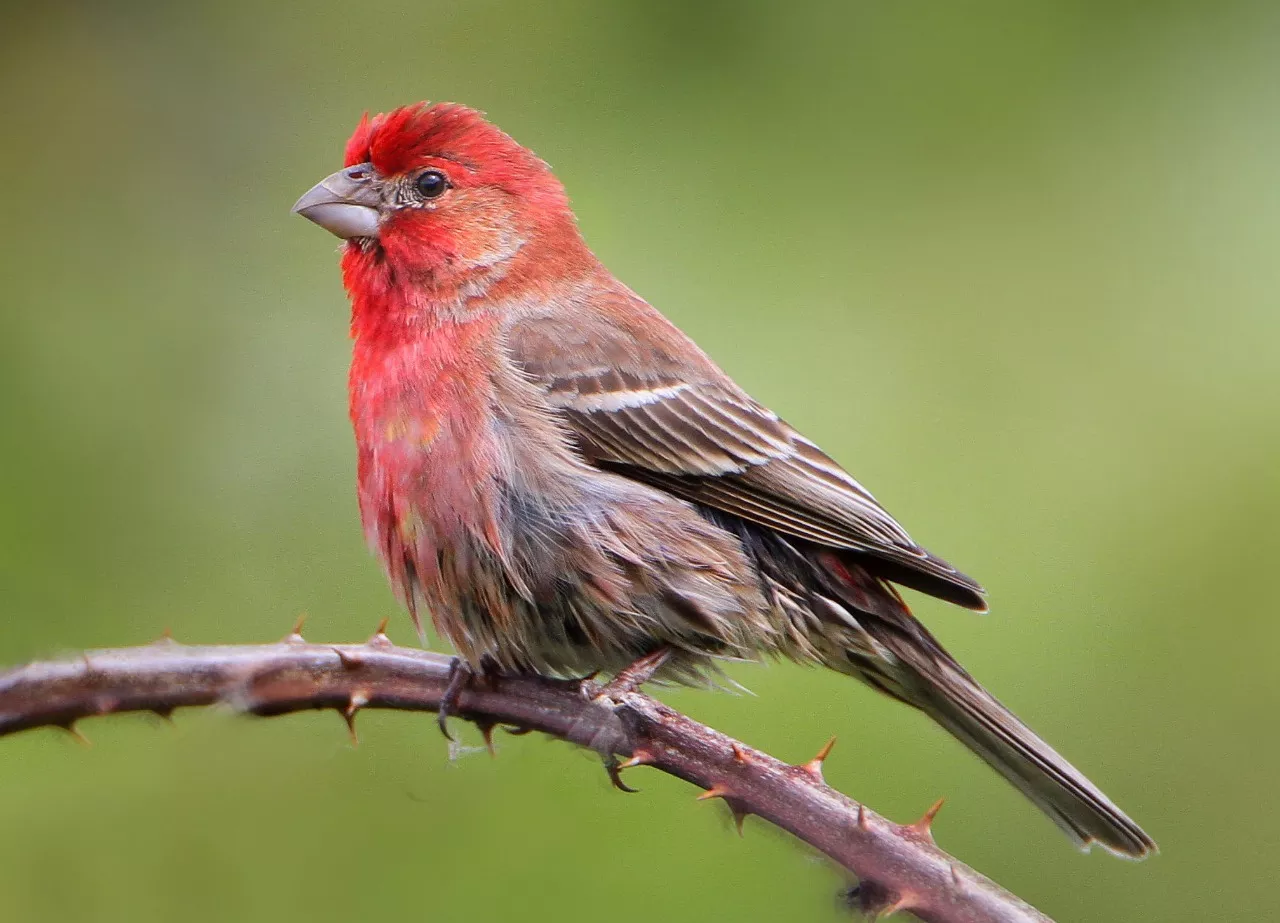
- Scientific name: Haemorhous mexicanus
- Life span: Up to 11 years
- Size: 12-15 cm (4.7-5.9 in)
- Weight: 16-27 g
- Origin: North America
The little finches are small-bodied birds with relatively big, conical beaks that are often seen in city parks, backyards, and farms.
The face and upper breast of mature male house finches are typically rosy red in color. Even when the bird is sitting, its disproportionately large breast is fairly noticeable as it soars through the air. The remainder of the feathers is prominently streaked with brown, including the tail, flanks, and back.
House finches are widely found across North America, and what sets them apart from other finches is their red coloring. This hue sometimes has a hint of orange or even yellow.
The amount of carotenoid-rich food that the bird eats determines its color variation. If carotenoid intake is higher, the bird will seem brilliant red.
6. Purple finch birds with a red chest
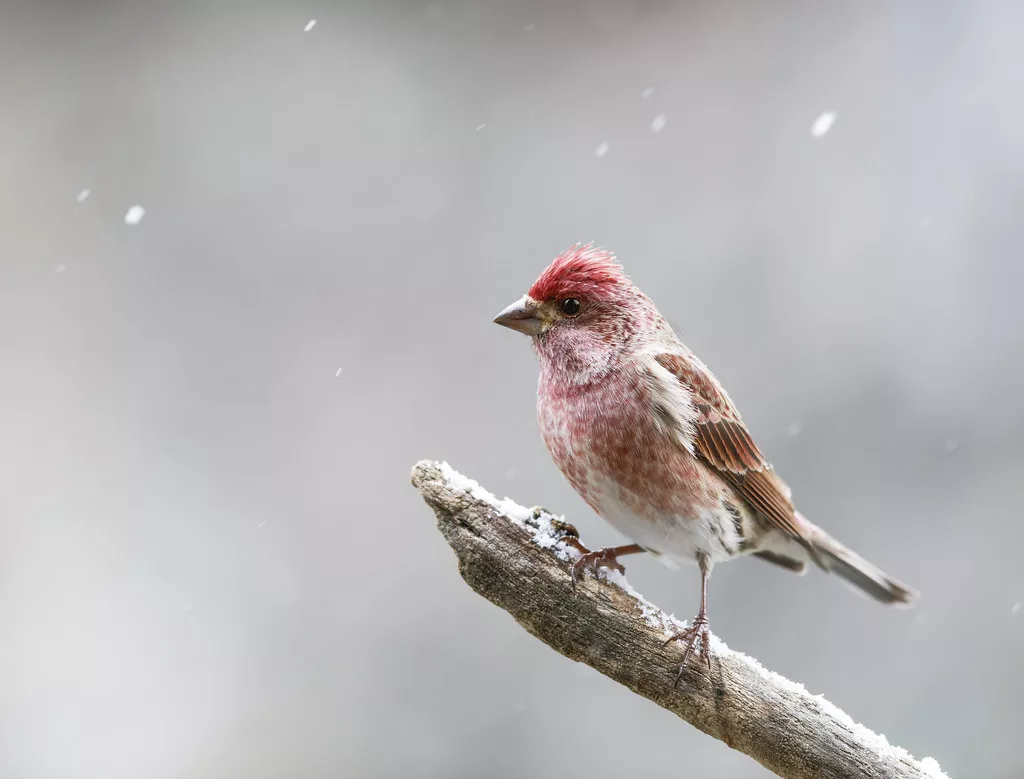
Image Source
- Scientific name: Haemorhous purpureus
- Life span: Up to 7 years
- Size: 14 cm (5.5 in)
- Weight: 20-25 g
- Origin: North America
The purple finch is a beautiful tiny bird renowned for its unusual appearance. Despite having the name “Purple Finch,” these adorable tiny birds really have a pinkish-red color. Similar to other bird species, the females lack the rosy red coloring, while the males are more flamboyant and show off their gorgeous colors.
These finches often live in coniferous woods, shrublands, and fields, where they nest and perch while singing their lyrical songs. They are uncommon in metropolitan centers because they prefer to remain far from the activities of the human population.
7. Cassin’s finch

- Scientific name: Haemorhous cassinii
- Life span: Up to 8 years
- Size: 15 cm (5.9 in)
- Weight: 19-23 g
- Origin: North America
The Cassin’s Finch, a small little bird found in hilly areas, is a beautiful sight. These birds, which are mostly found in woods, migrate to lower altitudes during the winter.
These finches, which are less common and noticeable than their others, have a reddish concentration on the head that fades to rose pink hues on the breast. The mountain dweller is also recognized by its longer conical beak, more elongated head, and subtle brownish streaks on the sides.
These chirpy finches travel in small groups, searching for seeds on the ground, perching on tall evergreen trees, and eating in aspen groves. Their raucous, joyous songs create a delightful atmosphere in the surroundings, sometimes in combination with other birds.
8. Vermilion flycatcher
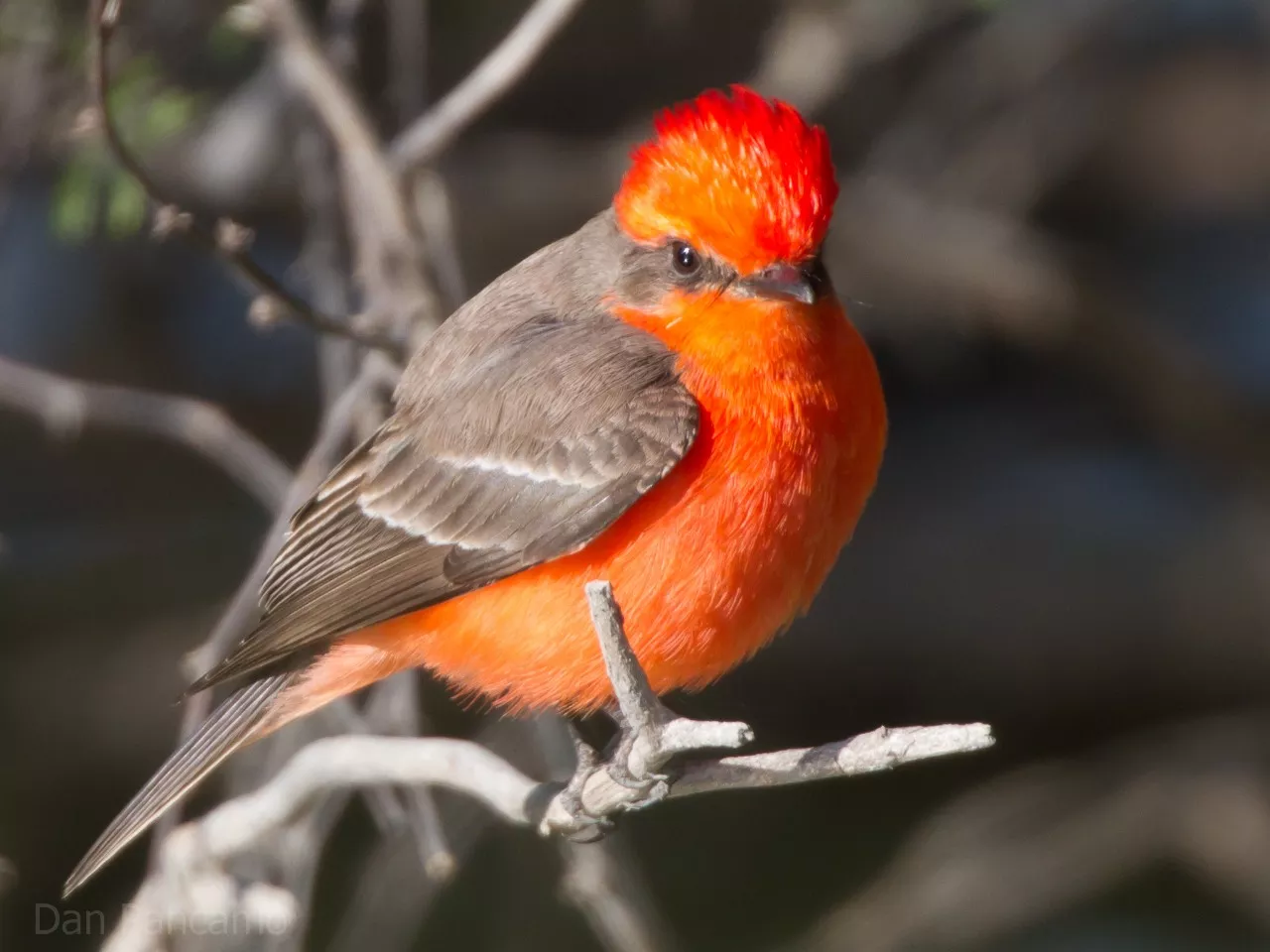
Image Source
- Scientific name: Pyrocephalus rubinus
- Life span: Up to 8 years
- Size: 13 cm (5.1 in)
- Weight: 8-12 g
- Origin: North, Central, and South America
One of the most beautiful members of the Flycatcher family are these little but magnificent birds. The noticeable bird has a stunningly vivid red hue. The species’ females are also beautiful, with underparts that are warm colors of salmon-red and delicate grey tones.
These magnificent flycatchers perch on tiny trees, shrubs, and marshes’ borders. This helps the bird consume a diet high in insects.
They may be spotted perched on top of plants and fences all across Central America and South America, ready to pounce on passing insects.
9. Painted whitestart (black bird with red belly)

Image Source
- Scientific name: Myioborus pictus
- Life span: Up to 6 years
- Size: 12 cm (4.7 in)
- Weight: 8-10 g
- Origin: Central and South America
These exquisitely colored members of the New World warbler family are a bird of unrivaled beauty. The largest of the warblers, they feature all-black plumage on the majority of their bodies from the head to the tail, with a bodacious ruby red on the breast and underbelly.
The white markings on their wings and outer tails add to their remarkable brilliance. This stunning warbler, inhabits Central America, Mexico, and Texas.
These active birds often flap their wings while foraging on insects in the plants and on the ground. They generally perched in the lower trees in canyons and hilly areas with oaks and pines.
10. Scarlet honeycreeper

Image Source
- Scientific name: Iridophanes pulcherrimus
- Life span: Up to 6 years
- Size: 11 cm (4.3 in)
- Weight: 10 g
- Origin: South America
The bright I’iwi, often referred to as the Scarlet Honeycreeper, is a native bird of Hawaii that consumes nectar. Its name comes from the flaming red feathers that cover its body, and it has black wings and a tail.
These birds are highly distinctive due to their colorful plumage and long, sharply decurved bills that are skilled at eating long, tubular flowers.
These birds are known to be highly hostile against other species who approach their nectar sources, aggressively driving them away. They are fairly noisy and boisterous in nature.
The I’iwis were formerly among Hawaii’s most common birds, but they are now a threatened species as a result of the area’s significant habitat loss and climate changes.
11. Summer tanager bird with reddish breast
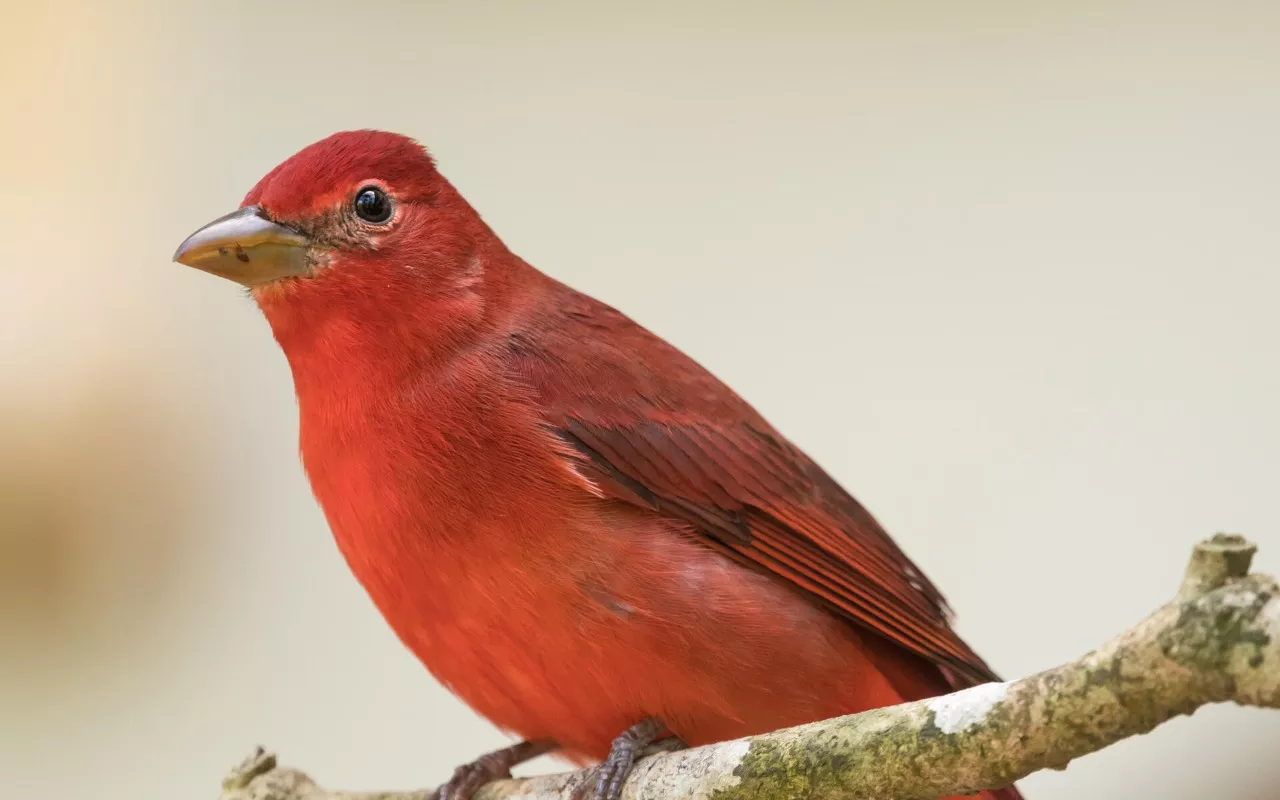
Image Source
- Scientific name: Piranga rubra
- Life span: Up to 8 years
- Size: 16 cm (6.3 in)
- Weight: 22-27 g
- Origin: North, Central, and South America
A wonderfully splashy sight is the stunning strawberry-colored tanager with all-red plumage. Sadly, unlike its male, the female has mustard yellow plumage, which may often make it difficult to notice it amid the deep forest canopy’s leaves.
One of the most exquisite breeding songbirds in North America, Summer Tanagers live in coniferous woods and woodlands. The tops of leafy trees, particularly oak, pine, and willow trees, are these magnificent birds’ preferred locations.
They sing songs like robins when perched high in the trees and generate rather unique, giggling notes.
During the winter, these rather frequent migratory birds go to Mexico, South, and Central America.
12. Scarlet tanager
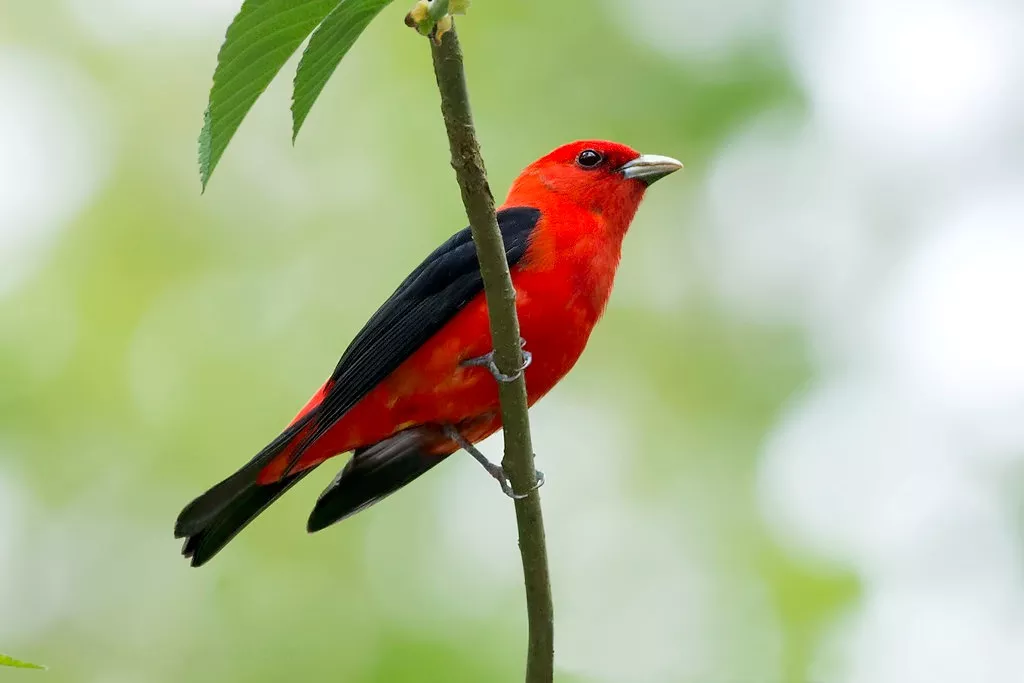
Image Source
- Scientific name: Piranga olivacea
- Life span: Up to 10 years
- Size: 18 cm (7.1 in)
- Weight: 22-28 g
- Origin: North, Central, and South America
The Scarlet Tanagers are stunning birds with eye-catching blood-red bodies and highly defined jet-black wings and tails that flash their magnificent plumage.
These songbirds, which live in deciduous woods, sit high in the forest canopy and mostly eat insects. They are difficult to see but their rich burrow songs may help identify them.
During the autumn, songbirds migrate to South America, changing their stunning red feathers into yellow-green ones.
13. Red-breasted sapsucker

Image Source
- Scientific name: Sphyrapicus ruber
- Life span: Up to 8 years
- Size: 20 cm (7.9 in)
- Weight: 35-60 g
- Origin: Western North America
The brilliantly colored bird is yellow on its lower body that is speckled with black, along with a blood-red head, neck, and breast. A medium-sized member of the woodpecker family, this magnificent bird is distinguished by its erect stance and piercingly sharp beak.
The bird builds its nests on hemlock, aspen, and ponderosa pine trees in the woods of America, usually in the middle or lower trunk of the trees.
14. Red crossbill
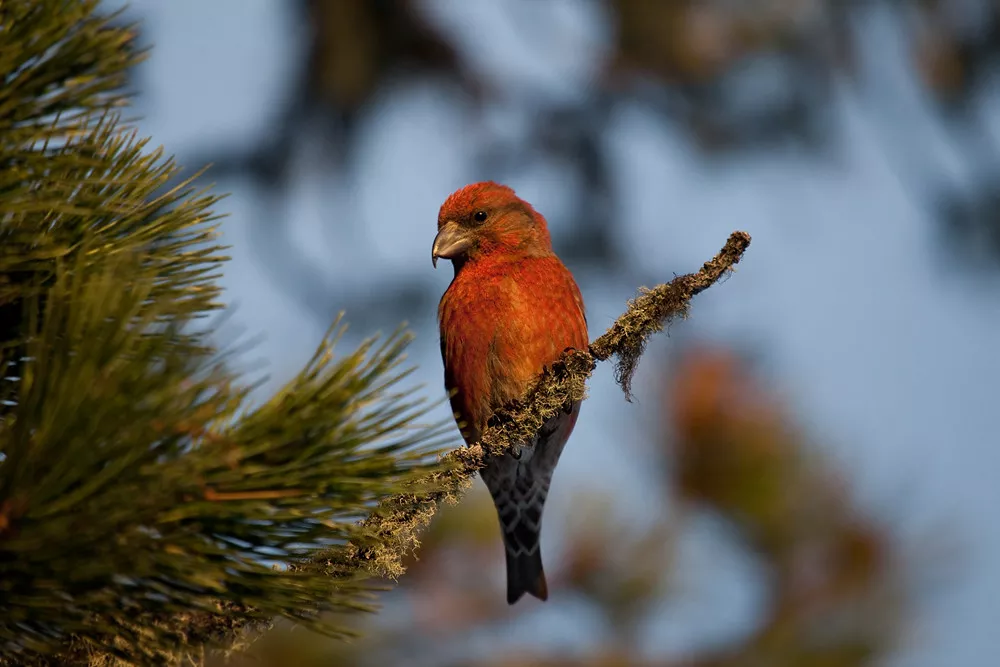
Image Source
- Scientific name: Loxia curvirostra
- Life span: Up to 10 years
- Size: 15 cm (5.9 in)
- Weight: 26-39 g
- Origin: North America and Europe
A charming medium-sized finch, it feeds on the rich seeds of hemlock, fir, and spruce cones thanks to its unusual beak. It lives in the coniferous Woodlands. Conifer seeds, which make up a significant portion of these birds’ diet, are their particular favorite food.
The bird has wings and a tail that is darker than its rusty, brick-colored plumage. The females, in contrast, have olive-green upper parts and yellow underparts.
The social birds are often seen in groups perched on trees, singing metallic cries. The crossbills often move to distant places since they have a migratory lifestyle, particularly in the winter.
15. Pyrrhuloxia (birds with red breast)

Image Source
- Scientific name: Cardinalis sinuatus
- Life span: Up to 10 years
- Size: 20-23 cm (7.9-9.1 in)
- Weight: 42-50 g
- Origin: Southwestern United States and Mexico
The Pyrrhuloxia is a member of the Cardinal family, often known as Desert Cardinals, and lives in the sweltering deserts of Southwest America.
With its spruce grey and red feathers, this bird appears just as stylish even if it does not have fully red plumage like the cardinal. It may be distinguished from northern cardinals by its robust yellow beak and taller, more beautiful crest of feathers.
These musical desert birds are strong because of the hard climate and become more aggressive during the mating season. However, during the winter, when they congregate in big flocks, sometimes numbering up to 1,000, they become highly social, setting aside their differences.
16. Crimson collared grosbeak

- Scientific name: Rhodothraupis celaeno
- Life span: Up to 6 years
- Size: 16 cm (6.3 in)
- Weight: 36 g
- Origin: Central and South America
This somewhat stocky bird has a broad red collar and a black hood that extends to its neck. It has a thick, cone-shaped beak and an abnormally long tail. With a similar black helmet and bib, the female bird has dull green plumage. The elegant bird eats fruits, berries, seeds, and insects while perching in high trees and low shrubs.
The birds live in northeastern Mexico and are native to North America. However, during the winter, these migratory birds migrate south of their normal range, into Texas.
17. Rose-breasted grosbeak (little bird with red chest)
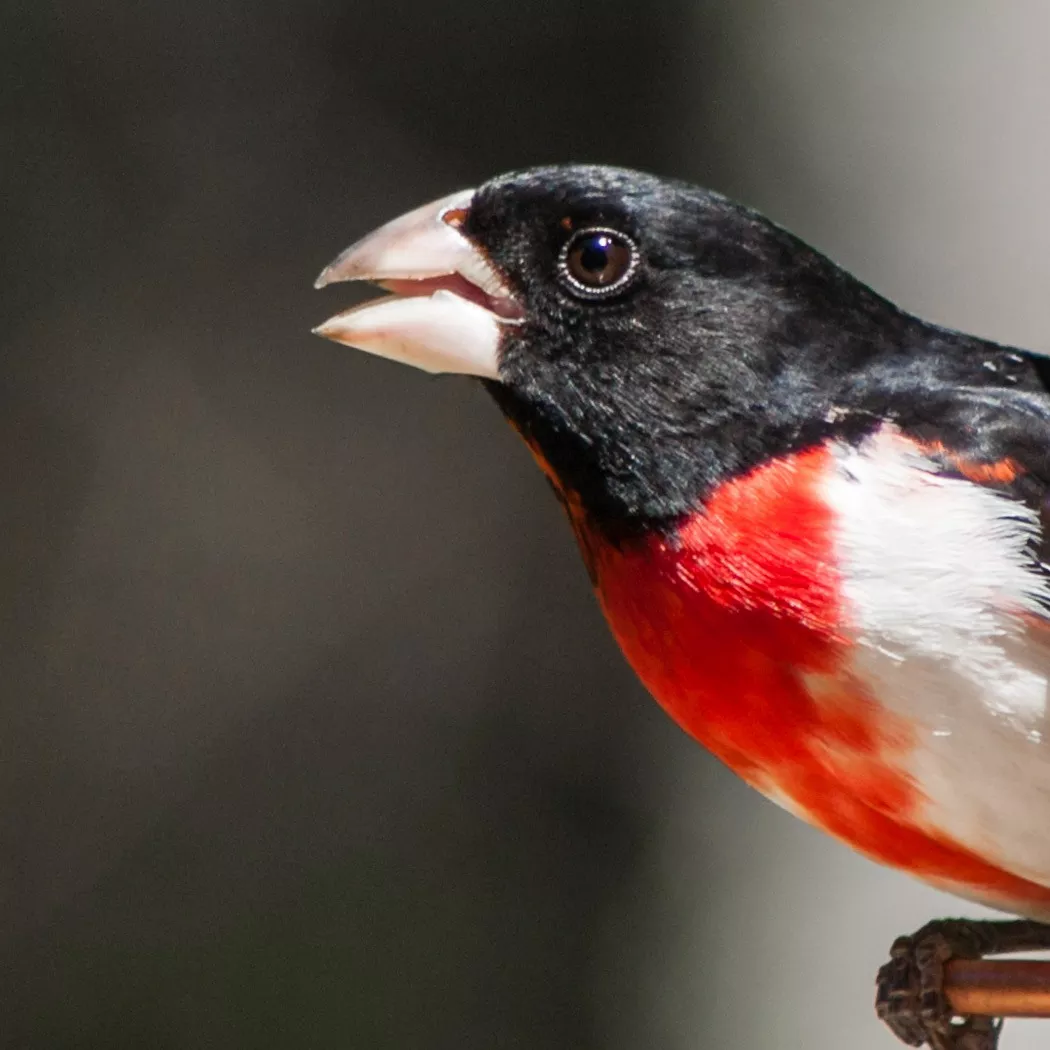
Image Source
- Scientific name: Pheucticus ludovicianus
- Life span: Up to 8 years
- Size: 18 cm (7.1 in)
- Weight: 31-46 g
- Origin: North and Central America
These medium-sized birds of the cardinal family, are lovely to see. They may be seen all throughout the eastern coniferous woods, woodlands, and parks and sing cheery songs that are musical and have lovely whistling sounds.
The stout Rose-breasted Grosbeak has a jet-black head that extends all the way to the tail and a magnificent red patch that runs from the neck to the breast.
White feathers cover the remainder of the underbody, and the wings and tail have decorative white patches. The frolicking bird’s large conical beak stands out in the whole body.
The females, in contrast to the males, have overly golden streaks throughout their brownish plumage.
18. Pine grosbeak (birds with red breast)
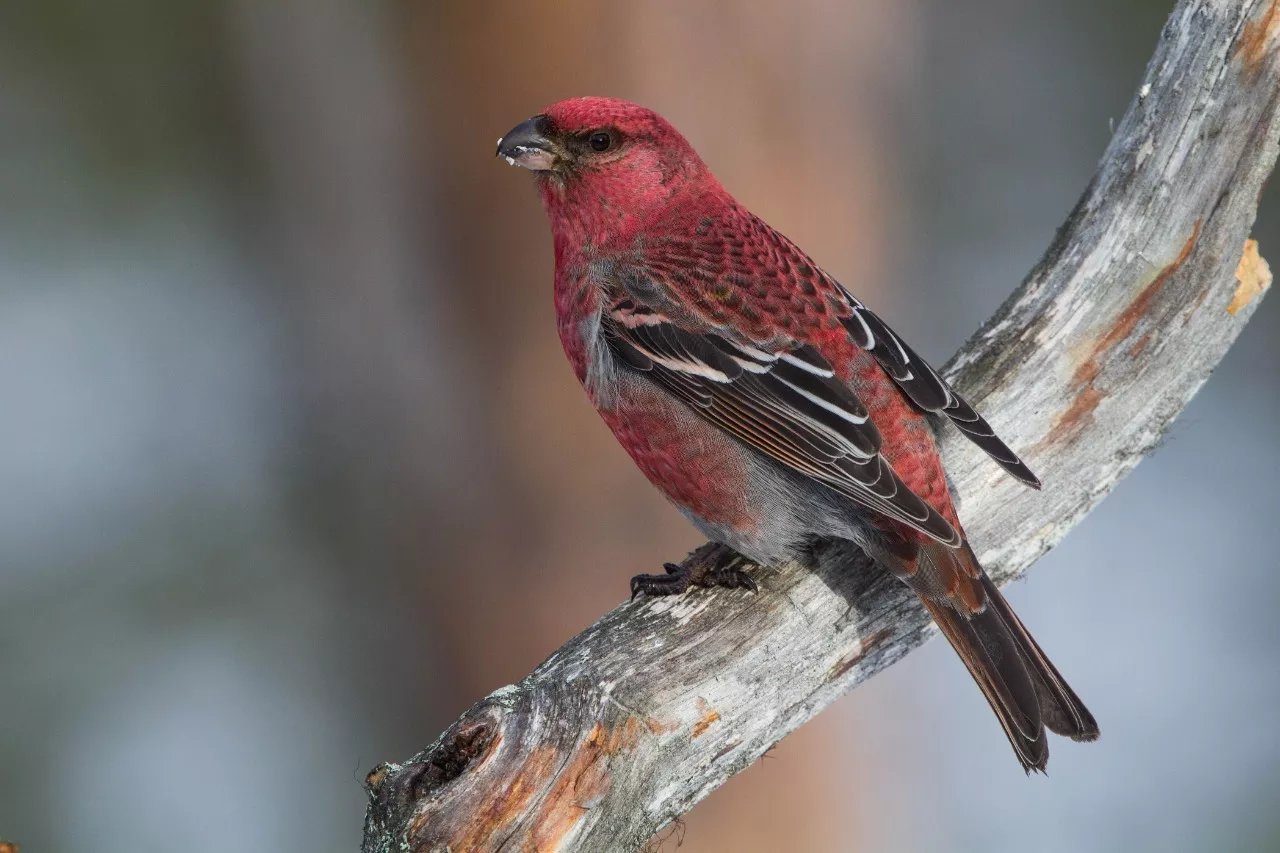
Image Source
- Scientific name: Pinicola enucleator
- Life span: Up to 10 years
- Size: 22-24 cm (8.7-9.4 in)
- Weight: 40-80 g
- Origin: Northern North America and Eurasia
The Pine Grosbeak, a member of the Finch family, is a big chubby bird with a broad chest. The rose pink plumage of the species’ mature males is accompanied by white and grey wing streaks and a long, black tail.
The heads and rumps of the females are yellowish-orange and have a coating of grey feathers on top of them.
This large finch is common in northern fir, spruce, and pine woods as well as high hilly areas.
The large, conical beak of this bird allows it to easily smash the seeds and nip off the tree buds.
19. Northern Cardinals
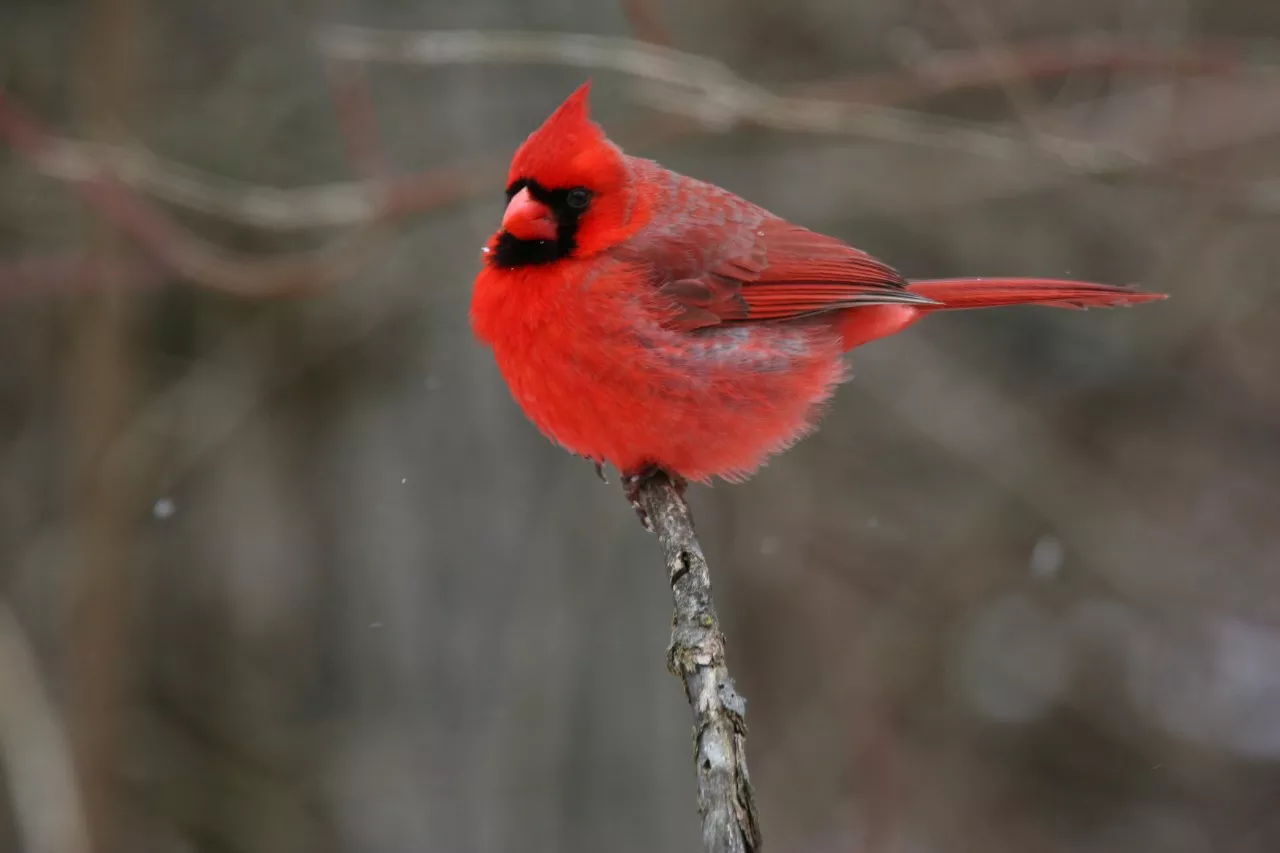
Image Source
- Scientific name: Cardinalis cardinalis
- Life span: Up to 15 years
- Size: 21 cm (8.3 in)
- Weight: 33-65 g
- Origin: Eastern and Central North America
Northern cardinal is another beautiful bird in our list of birds with a red breast. The Cardinals bring some sparkle to the ambiance with their high-pitched metallic chips, loud, sweet whistles, and lyrical melodies. The birds have pointed crests on their heads and bright red plumage, which gives them an air of royalty.
The Redbird is readily recognized because of its long tail, crimson conical beak, and black face. The females are not red. Instead, they have a brownish color with reddish undertones.
The beautiful backyard birds are often seen in couples or small groups close to the thick vegetation. These non-migratory birds provide a spectacular perspective of the snow-covered landscapes in the winter.
20. Elegant trogon (black bird with red chest)

Image Source
- Scientific name: Trogon elegans
- Life span: Up to 8 years
- Size: 28-30 cm (11-12 in)
- Weight: 57-74 g
- Origin: Mexico and Central America
The Elegant Trogon is the only species of Trogon bird that routinely occurs in North America out of all the species that inhabit tropical woods.
These magnificent birds have a stunning combination of colors, including a metallic green head with blue undertones and a rosy red underbody. A white stripe on the neck serves as a distinguishing feature of the bird.
Beautiful in appearance, the bird’s strong hooked beak helps with its insectivorous diet. They often emerge from the treetops to capture their prey.
21. Hepatic tanager

Image Source
- Scientific name: Piranga flava
- Life span: Up to 7 years
- Size: 18 cm (7.1 in)
- Weight: 25-31 g
- Origin: Western North America and Central America
The wide pine and pine-oak woodlands of the highlands are home to the prominent tanager. The magnificently colored bird sings sweet, carol-like melodies inside the interior of the trees as it inhabits the mountain ranges of Arizona and Mexico.
The female of the species tends to be yellowish mustard, while the male has a brilliant red upper body and brownish-red plumage.
These American songbird species were first categorized as Tanagers. However, more recent studies dispute this, asserting that owing to their very similar plumage and vocal, these Hepatic Tanagers are truly a member of the Cardinal family.
22. Eared trogon (black and white bird with red chest)

Image Source
- Scientific name: Euptilotis neoxenus
- Life span: Up to 8 years
- Size: 30-35 cm (12-14 in)
- Weight: 141-184 g
- Origin: Southwestern United States and Mexico
These Trogons are also known as Eared Quetzals. They are a rare species that live in the southern regions of Arizona and the Madrian Sky Islands, where they may be found in pine and pine-oak woods in canyons and mountains.
The bird is a beautiful symbol with a variety of colors. Its glossy green plumage is striped with blue and white feathers down to its tail, and its brilliant red breast and underbody are highly noticeable.
In contrast to its small head, the bird has a very massive, stocky body. Small, somewhat protruding ears on the sides of the head resemble feathery plumes and are surrounded by wisps that resemble hair.
Final Thoughts on birds with red breasts!
Birds with vibrant colors are always fascinating to see, and when the bird is stunningly red it is much more stunning to watch the amazing creature flap its wings.
Red is an energizing color that symbolizes pleasure, love, and passion. Birds with red breast are works of nature and astonishing to watch.
We really hope that this comprehensive list of birds with red chests has increased your understanding of these amazing creatures.
If you like birds with a red breast, you will also like black birds with redheads
Frequently Asked Questions (FAQs)
What birds have a red breast?
Birds with red breasts include the American Robin, Scarlet Tanager, Northern Cardinal, House Finch, Purple Finch, Rose-breasted Grosbeak, and Red-breasted Nuthatch, among others.
What causes a bird to have a red breast?
The red color of a bird’s breast can be attributed to the presence of pigments called carotenoids. These pigments are obtained from the bird’s diet, and their presence can indicate the bird’s overall health and nutrition.
Do male and female birds have red breasts?
In many bird species, males are more likely to have red breasts than females. However, there are exceptions, such as the female Northern Cardinal, which also has a red crest and bill.
What is the significance of a bird’s red breast?
A bird’s red breast can serve several purposes, including attracting mates, signaling aggression or territoriality, and warning of potential danger to other birds. The color can also play a role in camouflage, as it can blend in with the surrounding foliage or help the bird to stand out against a background of snow.
How can I attract birds with red breasts to my backyard?
To attract birds with red breasts to your backyard, you can provide a variety of bird feeders and birdhouses, as well as sources of water, such as a bird bath or fountain. Additionally, planting native trees and shrubs can provide natural sources of food and shelter for these birds.



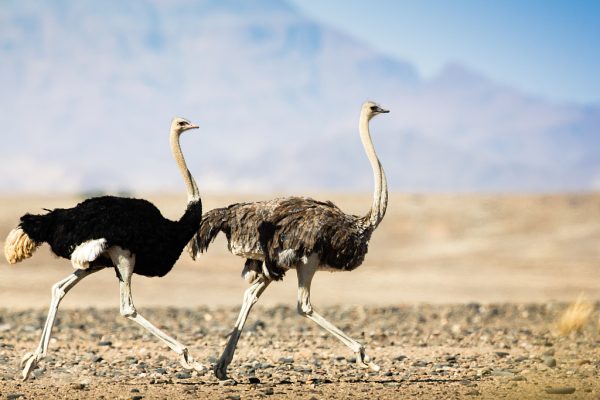


One thought on “22 Astonishing Birds with Red Breast [With Pictures]”